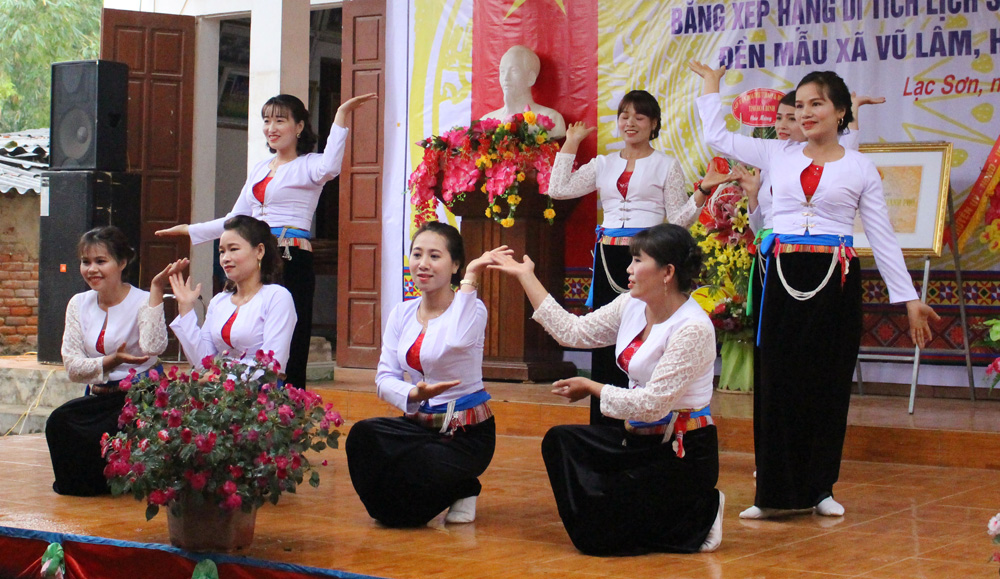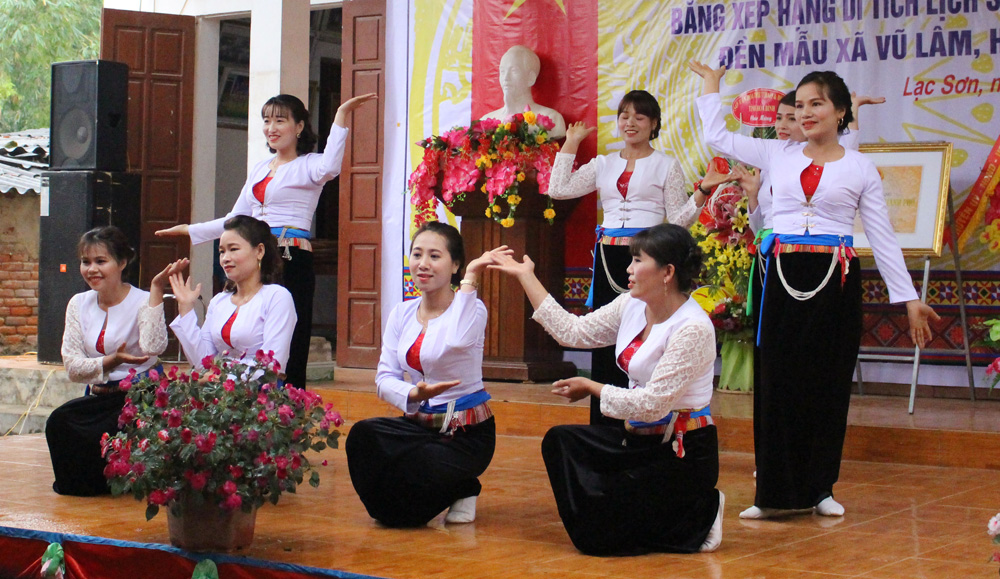
(HBO) – The campaign "The whole people engage in building the cultural life” has received enthusiastic response from the political system and local people.
 Art teams are established in all wards, villages and hamlets to deliver performance serving local political missions.
Art teams are established in all wards, villages and hamlets to deliver performance serving local political missions.
The consolidation and development of cultural institutions, organisations and families coupled with the campaign "The whole people unite to build new-style rural areas and civilised urban areas” have shown efficiency. There is an increasing number of registrations for the titles "cultural family” and "cultural residential area”. Last year, 50 percent of the district’s households satisfied standards of the "cultural family”, and 10 percent of villages and wards received the title "cultural village, ward”. Meanwhile, the "cultural organisation, agency and business” title was bestowed on 18 percent of the local organisations and businesses, and 53.3 percent of the local schools.
Local authorities have worked to carry out the campaign on building the cultural life in tandem with the campaign on building new-style rural areas. In addition, competent sectors and organisations have coordinated in the work.
Particularly, the communication work has been paid due attention to raise public awareness of the standards of the two campaigns, helping improve the spiritual and material lives for local people as well as successfully implement local socio-economic development missions and maintain local defence-security.
In the coming time, the campaign "The whole people engage in building the cultural life” will be carried out in accordance with the development of rural culture in building advanced new-style rural areas, advanced new-style rural area and patriotic emulation movements.
The locality will complete and promote the efficiency of the cultural institution system at grass-roots level, creating favourable conditions for local people to develop culture, and contributing to concretising socio-economic development goals in the new period./.
With an increasingly vibrant and widespread emulation movement aimed at building cultured residential areas and cultured families, Yen Thuy District has been making steady progress toward improving both the material and spiritual well-being of its people, while fostering a civilized, prosperous, beautiful, and progressive community.
Once lacking recreational spaces and community facilities, Residential Group 2 in Quynh Lam Ward (Hoa Binh City) has recently received attention for the construction of a new, spacious, and fully equipped cultural house. The project followed the model of state support combined with public contributions in both labor and funding.
The "All people unite to build cultural life" movement, which has been effectively integrated with Kim Boi district’s socio-economic development goals, is fostering a lively spirit of emulation across local residential areas, hamlets, villages, public agencies, and enterprises. In addition, through the initiative, traditional cultural values are being preserved and promoted, while community solidarity and mutual support in poverty reduction and economic development are being strengthened.
A working delegation of the Hoa Binh provincial People’s Committee led by its Permanent Vice Chairman Nguyen Van Toan on June 11 inspected the progress of a project to build the Mo Muong Cultural Heritage Conservation Space linked to tourism services in Hop Phong commune, Cao Phong district.
Born and growing in the heroic land of Muong Dong, Dinh Thi Kieu Dung, a resident in Bo town of Kim Boi district, in her childhood was nurtured by the sweet lullabies of her grandmother and mother. These melodies deeply imprinted on her soul, becoming an inseparable part of her love for her ethnic group's culture. For over 20 years, this love for her hometown has driven Dung to research, collect, and pass down the cultural values of the Muong people to future generations.
In the final days of May, the Ethnic Art Troupe of Hoa Binh Province organized performances to serve the people in remote, mountainous, and particularly disadvantaged areas within the province. These were not just ordinary artistic shows, but they were the meaningful journeys aimed at spreading cultural values, enhancing the spiritual life of the people and contributing to the preservation of ethnic minority cultural identities.



 Art teams are established in all wards, villages and hamlets to deliver performance serving local political missions.
Art teams are established in all wards, villages and hamlets to deliver performance serving local political missions.